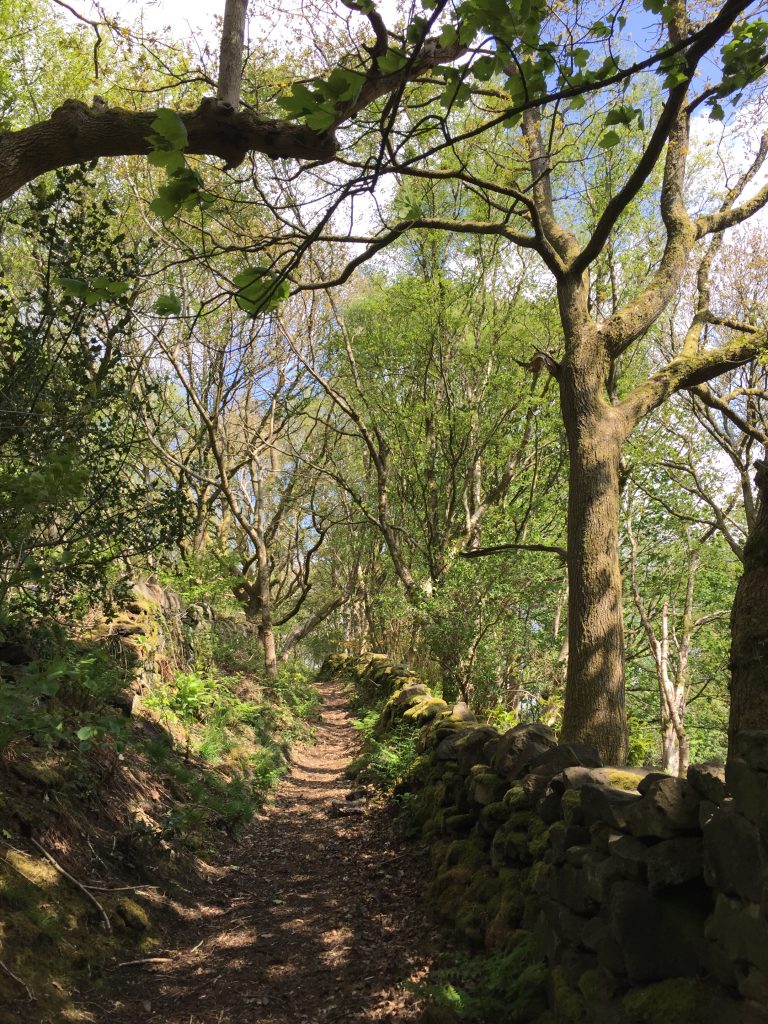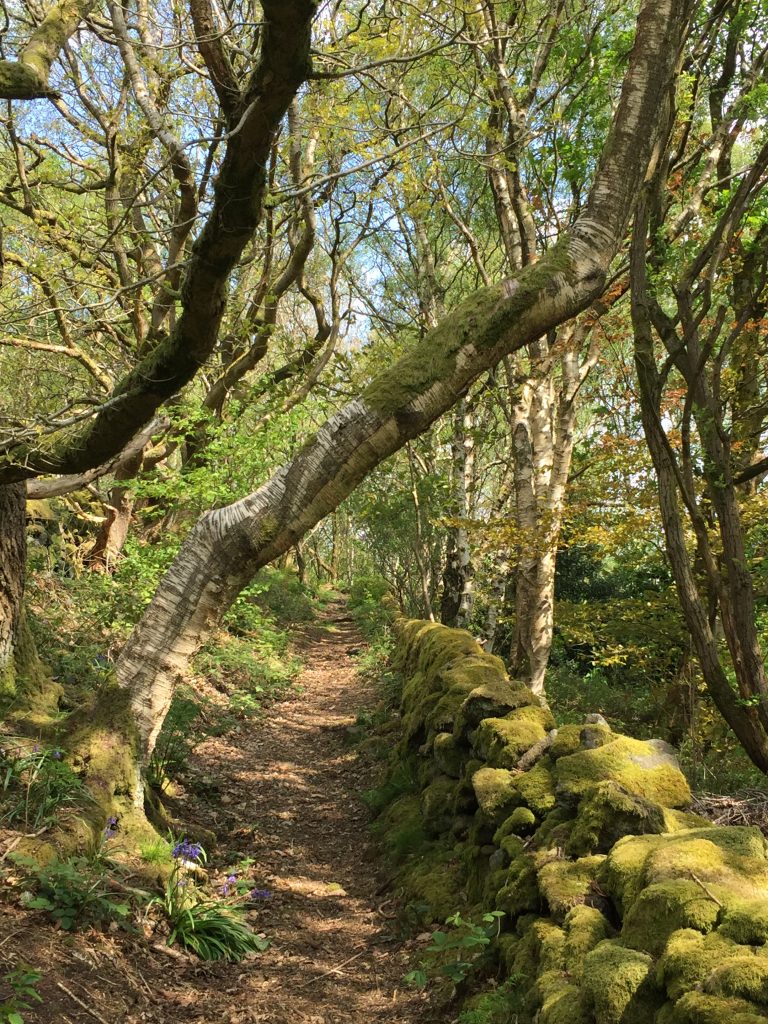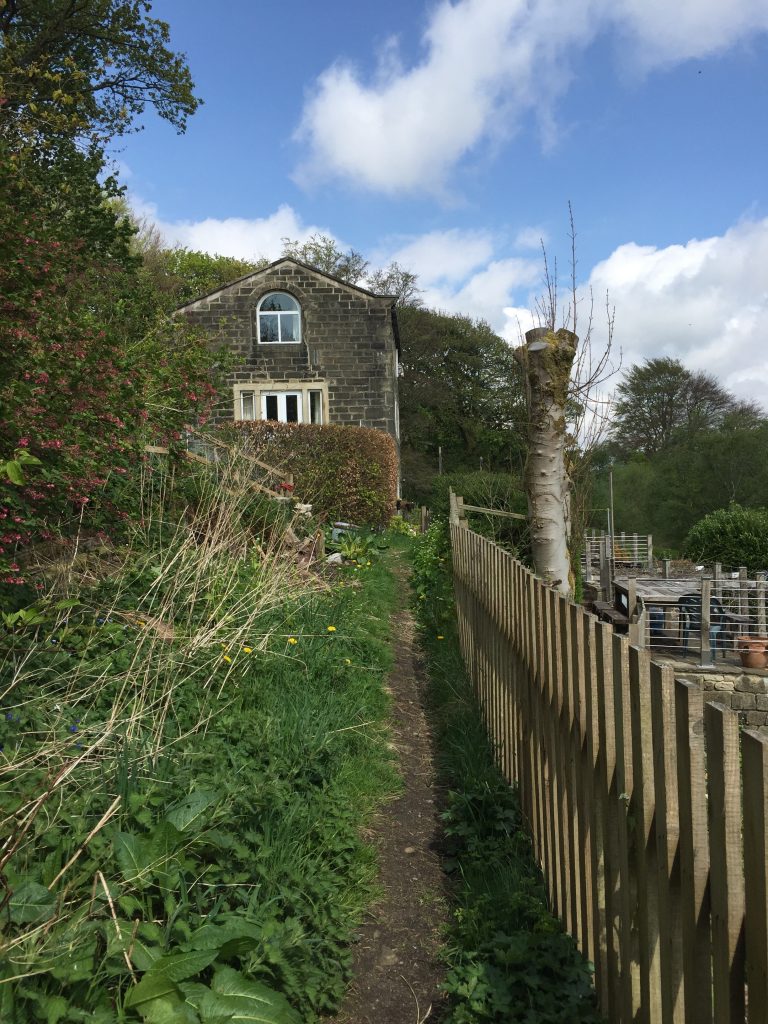
Corpse roads provided a practical means for transporting corpses, often from remote communities, to cemeteries that had burial rights, such as parish churches and chapels of ease. These latter churches were built to lessen the distance people had to travel to the parish church. Until the building of a church in Heptonstall, between 1256 and 1260 people from the entire Calder Valley had to travel to Halifax for baptisms, marriages and funerals. The Church of St John the Baptist in Halifax was built around 1095. It was meant to provide for the whole Parish, which was the largest in England at 150 square miles. It was the only place to have your child baptised, to marry and be buried, to say nothing of regular worship. Hardly surprising that children went unbaptised and marriages happened in the market place, ( the “brush” marriage). Corpse roads connected outlying locations wih their mother churches, in this case Halifax, which alone held burial rights. This meant that some corpses had to be transported long distances, sometimes through difficult terrain. Only wealthy people could afford transportation so the corpses had to be carried. In parts, the track is paved to a breadth of 7-8ft, wide enough for a coffin cart or two people walking abreast with a load between them; large blocks of stone beside the path may have been resting stones for those who could not afford a carrier. It is walled and embanked where appropriate to maintain an approximately steady gradient.

I hadn’t set out to walk along the corpse road. I’d set off to visit a house I can see from my window, perched high on the Heptonstall hill. I knew it must be somewhere off the Heptonstall road, so I went to find it. As luck would have it a couple there were working on their garden and I chatted to them and told them of my mission. I could see that the narrow road that led to their house became a footpath and I asked if it led to the church. No, it didn’t but if I followed it I would eventually come out higher on the Heptonstall road, so off I went. It was a well used footpath, bounded on the right by an old wall, and I could see underfoot that it had once been a well cobbled track. Then as I approached Lily Hall it suddenly dawned on me that this was none other than the Corpse Road that I’d read about. The original derivation of Lily Hall’s name is not known but the well known local historian John Billingsley who has helped me with my Lily Hall research has suggested that there may be a possibility that its name is connected with the corpseways (both the Buttress and Mytholm routes meet at this point).

“Lilies are widely associated with the soul, and traditionally feature in funerals, “where they symbolised the soul of the departed, shriven from the sins of the world”. By extension from this symbolism white lilies came to be considered unlucky indoors (as they might incur a death), though in the garden they were a protection against ghosts. It might be that Lily Hall relates to this custom, perhaps as somewhere lilies were conferred or purchased for the final entry into Heptonstall village, though more information would be required to support this suggestion,” he writes.
Leave a Reply